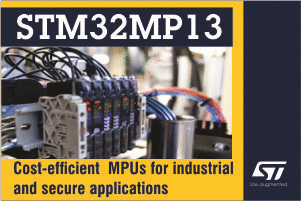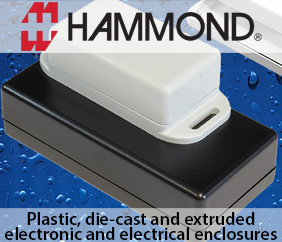 Whether you are new to the technology or have worked with pressure sensors for years, how confident are you with some of the terminology involved in pressure sensor selection? Today I will provide a refresher on the common terminology you will be exposed to during your quest to spec the best pressure sensor for your application.
Whether you are new to the technology or have worked with pressure sensors for years, how confident are you with some of the terminology involved in pressure sensor selection? Today I will provide a refresher on the common terminology you will be exposed to during your quest to spec the best pressure sensor for your application.
With a growing pressure sensor market and an increase in applications for the technology, as an engineer you are bound to work with pressure sensors if you haven’t already. A recently published Zion Research report on the market estimates the global demand for pressure sensors to reach USD 9.5 billion by 2020, up from USD 6.5 billion in 2014. The key markets for pressure sensors are automotive, consumer electronics, industrial, medical, and oil & gas, though the application of this technology is ever-expanding.
As pressure sensors become increasingly prevalent, it is important for engineers to know the basic terminology for product selection. Let’s review some of the common terms and questions related to selecting a pressure sensor.
How do pressure sensors work and what is the piezoresistive effect?
The most common type of pressure sensor for general purpose detection uses a diaphragm made of silicon or stainless steel (for harsher applications) as a strain gauge, meaning a flexible material designed to deflect in proportion to the amount of applied pressure. That deflection is a measured value that is converted into an electrical signal the sensor can interpret. When taking a deeper technical dive into how the sensing element works, you may hear reference to piezoresistive type pressure sensors. Piezo comes from the Greek word “piezein,” which means “squeeze” or “apply some pressure.” The piezoresistive effect is the change in electrical resistance of a semiconductor material due to mechanical stress across the piezo material, or diaphragm. Piezoresistive sensors convert the mechanical energy from the deflected diaphragm into proportionate levels of resistance, unlike their cousin the piezoelectric sensor, who converts the stimulus to a charge or voltage. Piezoresistive sensors are typically available in a wider variety of packaging options and specify abilities greater than 10 mV/V. An example of a piezoresistive pressure sensor is the 33A-015D from TE Connectivity.
As pressure sensors become increasingly prevalent, it is important for engineers to know the basic terminology for product selection. Let’s review some of the common terms and questions related to selecting a pressure sensor.
How do pressure sensors work and what is the piezoresistive effect?
The most common type of pressure sensor for general purpose detection uses a diaphragm made of silicon or stainless steel (for harsher applications) as a strain gauge, meaning a flexible material designed to deflect in proportion to the amount of applied pressure. That deflection is a measured value that is converted into an electrical signal the sensor can interpret. When taking a deeper technical dive into how the sensing element works, you may hear reference to piezoresistive type pressure sensors. Piezo comes from the Greek word “piezein,” which means “squeeze” or “apply some pressure.” The piezoresistive effect is the change in electrical resistance of a semiconductor material due to mechanical stress across the piezo material, or diaphragm. Piezoresistive sensors convert the mechanical energy from the deflected diaphragm into proportionate levels of resistance, unlike their cousin the piezoelectric sensor, who converts the stimulus to a charge or voltage. Piezoresistive sensors are typically available in a wider variety of packaging options and specify abilities greater than 10 mV/V. An example of a piezoresistive pressure sensor is the 33A-015D from TE Connectivity.
What are the various types of pressure measurement?
Scientists came up with methods of measuring things like air pressure, tire pressure, and blood pressure by determining their values relative to other measurements. What you are measuring will often determine which system of pressure measurement you select, with absolute and gauge pressure being the most common.
Absolute: Absolute pressure is measured relative to the absolute zero pressure, meaning the pressure that would occur in a perfect vacuum. The best example of absolute pressure is the measurement of barometric pressure, which uses a sensor manufactured with a high vacuum on the negative side of the sensing diaphragm. The U5600-00000E-020BA from TE Connectivity is an absolute type industrial pressure sensor, measuring 0-20bar.
Gauge: Gauge pressure compares a system to the surrounding atmosphere.
Measuring against ambient atmospheric pressure means changes due to weather conditions or altitude will directly influence the measurement. When a gauge pressure is higher than ambient pressure, this is considered a positive pressure. A gauge pressure below atmospheric pressure will give you negative, or vacuum pressure. A perfect example of gauge measurement is your tire pressure gauge – comparing the pressure inside your vehicle’s tire to the atmospheric pressure outside. Gauge pressure sensors usually only have one pressure port, with a vent on the negative side of the sensing diaphragm to allow measurement with reference to the ambient barometric pressure. The NPA-700B-005G from Amphenol Advanced Sensors is a gauge type board mount pressure sensor, measuring 0-5psi.
Sealed Gauge: These next sensors are typically used for high pressure applications such as hydraulic pressure, and you will see this term in rugged industrial pressure sensors used for automotive or agricultural applications. Basically, the negative side of the diaphragm is sealed to a fixed pressure rather than atmospheric pressure. This means the sealed device compares the measured pressure against whatever zero point or set point was determined by the manufacturer and sealed inside the device upon production. The MLH200BSD01B from Honeywell Microelectronics & Precision Sensors is a sealed gauge industrial pressure sensor.
Differential: Differential refers to when a sensor is used to measure the difference between two pressure points – one on either side of the diaphragm. Technically absolute and gauge pressure sensors are both actually differential pressure sensors because each type is measuring the difference between two pressures. The difference is that in this case you as the user are determining both sides of the sensing diaphragm, rather than comparing to atmospheric or vacuum pressure. Differential pressure sensors are often used to detect leaks, clogs, or changes in a system – working to detect a problem early on. Some application examples include measuring pressure drops across oil or air filters, measuring fluid levels by comparing the pressure above and below the liquid line, or measuring the flow rate before and after a restriction in the system. The D6F-PH0025AD1 from Omron is a board mount differential pressure sensor that detects 0-250 Pa.
Vacuum: Most often this term is used to describe a sensor that measures negative gauge pressure, or pressures below atmospheric pressure. Note that sometimes this term is used to describe a sensor that we (in this article) would consider an absolute pressure sensor. The 76584-00000100-05 from Honeywell is an industrial vacuum pressure sensor.
How do you know when to measure absolute or gauge pressure?
Generally if you want to measure or control a pressure that is influenced by atmospheric pressure changes, you should select vented gauge pressure. An example of this is measurement of liquid level in an open tank. However, if you want uninfluenced measurement for a purpose such as leak testing a completely sealed container, you should select absolute pressure.
What is Wet-to-Wet vs. Dry-to-Dry Differential Pressure Sensing?
As mentioned, differential pressure is the difference between two selected points of measurement. A Wet-to-Wet, or W/W, setup has liquid on both the high and low pressure ports. This could involve liquid pushing on both sides of a single sensing diaphragm or two separate sensors doing a comparison calculation to determine the difference. These are common for monitoring filter status, HVAC chiller efficiency, and suction/discharge of pumps as well as in process and pressurized tank application. As I’m sure you guessed, a D/D setup only measures air or non-corrosive gas on both the high and low pressure ports of a single sensing diaphragm. D/D differential pressure sensors are common for filter and leak detection. Less common is the W/D differential sensor that measures a dry port of air or non-corrosive gas against a wet port with fluid pressure.
What is the difference between unidirectional and bidirectional differential pressure sensors?
Another way to think of these is whether your pressure sensor can detect both positive and negative pressure, or if it is solely vacuum (negative) or solely positive pressure. Unidirectional differential pressure sensors contain a diaphragm that will only deflect in a single direction. If you accidentally spec a unidirectional sensor for an application that requires both positive and negative differential pressure, you will most likely damage your sensor. Bidirectional detection involves a diaphragm that can flex symmetrically in either direction, allowing both positive and negative pressure to be monitored. Typically you will not negatively affect your application if you select a bidirectional sensor; however over-spec’ing with a bidirectional sensor will most likely add unnecessary cost to your solution.
Whether you are specifying a board mount or industrial pressure sensor, the same basic principles and terminology carry through. Some major questions to ask yourself when narrowing to a specific pressure sensor family are:
- How do I want to mount this sensor (board mount, L-bracket, etc.)?
- What am I detecting (air, non-corrosive gas, liquid)?
- What is the pressure range I can expect this sensor to undergo?
- What is the supply voltage available for powering the sensor?
- Are there any other specs that are top priority (response time, output voltage, etc.)?
- What type of environment (temperature, debris, liquids, etc.) will this sensor experience?
If you can answer the above questions and understand the terminology discussed you are well on your way to spec’ing the best pressure sensor for your application.









